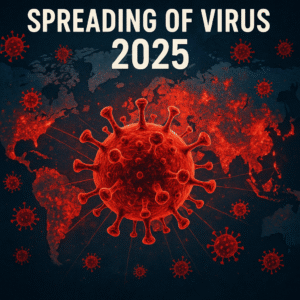Characteristic of the new variant – COVID-19
Key characteristics of the emerging variant
The newest COVID-19 variant isn’t playing by the same rules as its predecessors. Scientists have spotted several mutations on its spike protein—the part of the virus that attaches to human cells. These changes make it stickier, helping it latch onto our cells more effectively than earlier versions.

What’s really grabbing attention is how quickly it spreads. Early data suggests it’s moving through populations about 40% faster than previous dominant strains. Even people who’ve had COVID before aren’t fully protected—this variant seems particularly good at slipping past immunity from previous infections.
The symptoms? Not dramatically different, but reports show more people experiencing:
-
Severe fatigue
-
Headaches
-
Throat discomfort
-
Less loss of taste and smell than earlier variants

Key characteristics of the emerging variant
The newest COVID-19 variant isn’t playing by the same rules as its predecessors. Scientists have spotted several mutations on its spike protein—the part of the virus that attaches to human cells. These changes make it stickier, helping it latch onto our cells more effectively than earlier versions.
What’s really grabbing attention is how quickly it spreads. Early data suggests it’s moving through populations about 40% faster than previous dominant strains. Even people who’ve had COVID before aren’t fully protected—this variant seems particularly good at slipping past immunity from previous infections.
The symptoms? Not dramatically different, but reports show more people experiencing:
-
Severe fatigue
-
Headaches
-
Throat discomfort
-
Less loss of taste and smell than earlier variants
Geographic origin and spread patterns
This variant first popped up in Southeast Asia about three months ago. Within weeks, it had already hopped borders and continents.
Unlike earlier waves that took months to circle the globe, this one is showing up everywhere fast. It’s already dominant in parts of Asia and rapidly gaining ground in Europe. The travel patterns look different too—it’s not just following major air routes but showing up in unexpected places with fewer direct connections.
How it differs from previous variants
The biggest difference? This variant doesn’t seem as bothered by our existing immunity. The protection from vaccines or previous infections isn’t holding up as well.
Thankfully, it doesn’t appear more deadly than recent variants, but its ability to infect more people means more folks will get sick overall.
Another interesting shift: it seems to replicate faster in the upper respiratory tract but slower in the lungs. This might explain why it spreads so efficiently while causing (on average) slightly less severe disease.
The virus keeps evolving, and this variant shows it’s far from done surprising us.


.svg)

